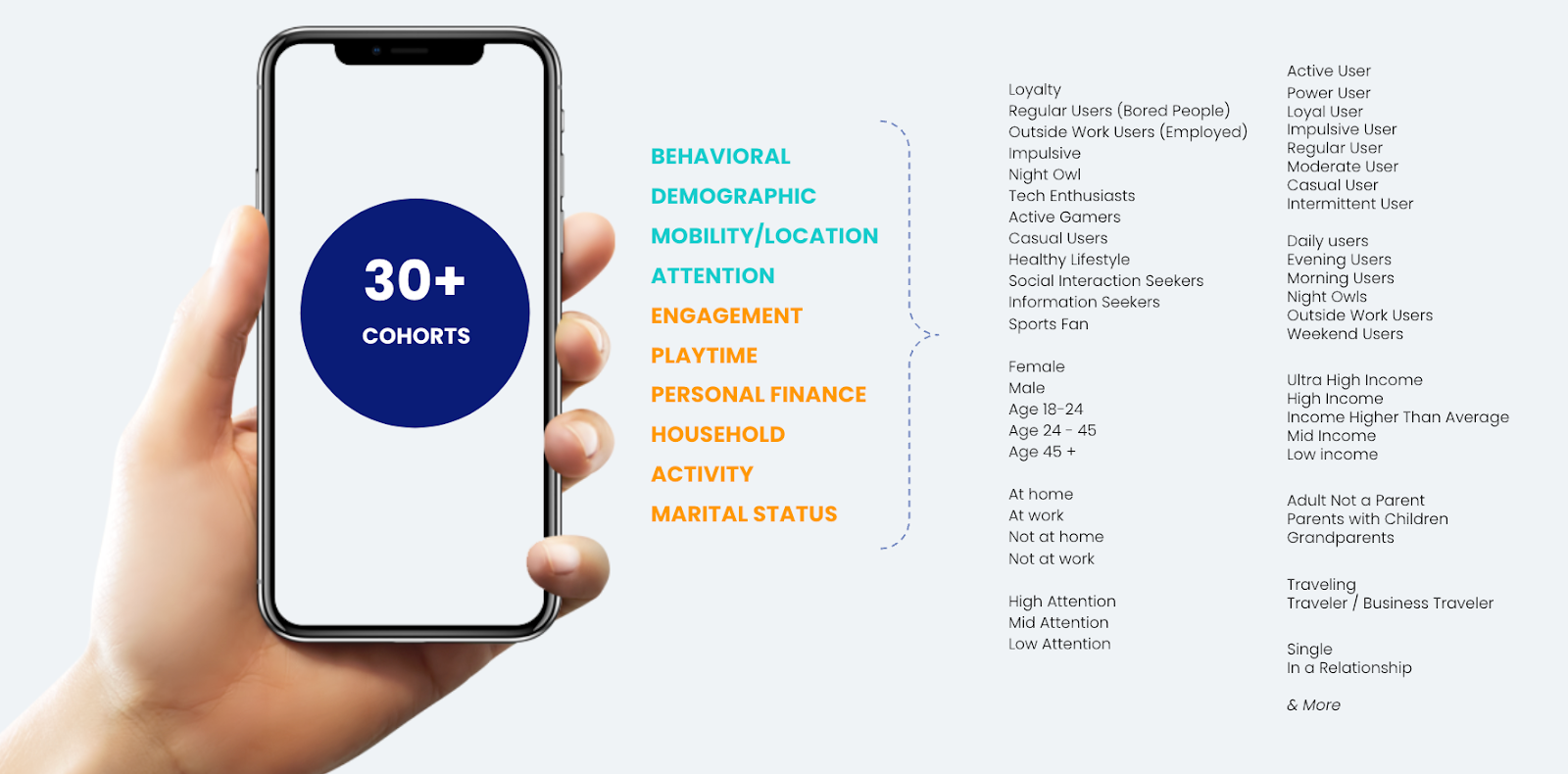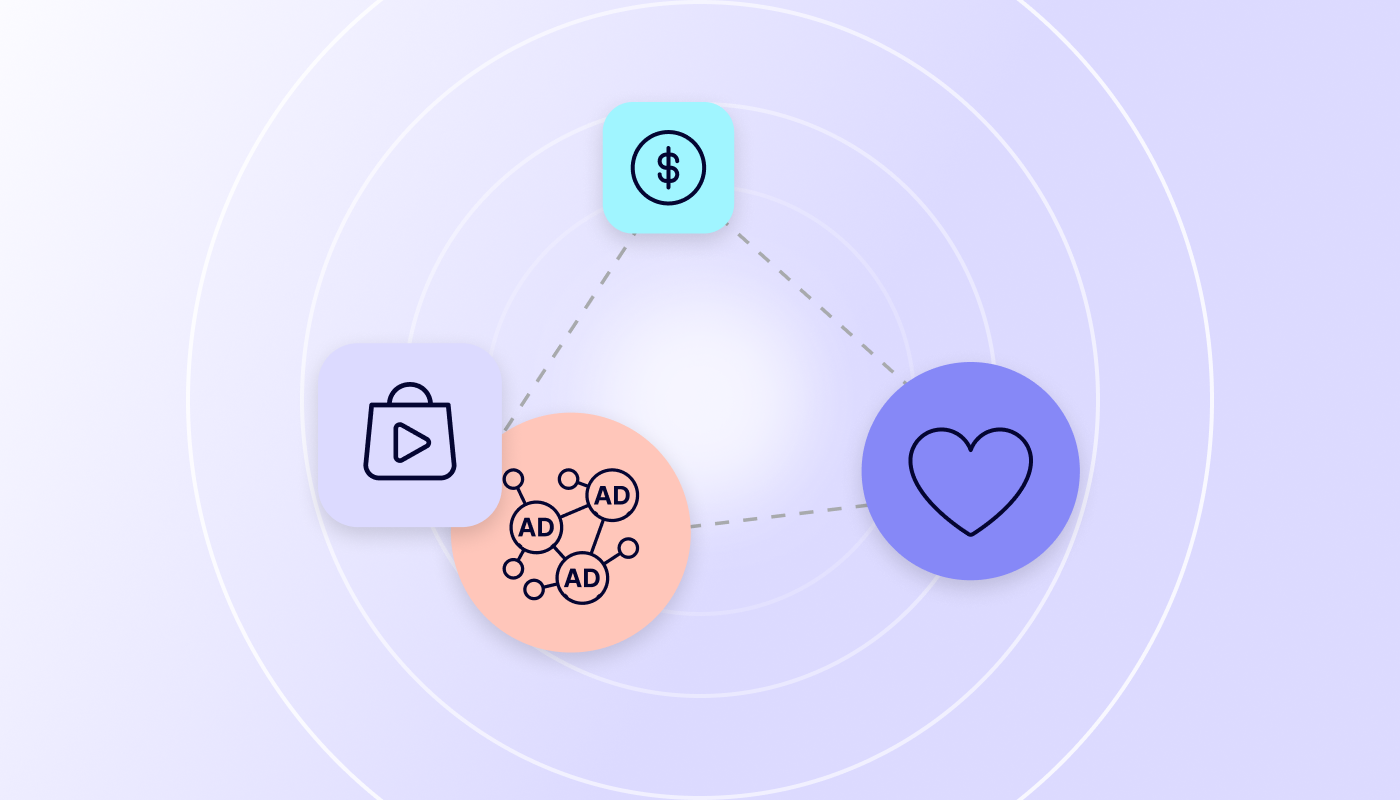The loss of signals
The internet is now divided into two categories of users: authenticated and anonymized (unauthenticated). Authenticated users allow access to identifiers (IDs) or personally identifiable information (PII) — given relevant consent permissions are obtained from the user. Meanwhile, unauthenticated users demand anonymity and privacy from personalized advertising.
Reality check: ID-less is the default. For example, we see on our marketplace that only 30% of the iOS user base is authenticated traffic; unauthenticated iOS devices account for 70%. While Android devices are still available with GAID, this is bound to change in the next few years as Google continues its efforts toward a more privacy-focused targeting infrastructure with key partners, including Verve.
While the internet user base is split into two, the ID-free solutions landscape is more fragmented than ever, leaving buyers and sellers with multiple technologies to test and validate. That said, not all solutions are equally future-proof. Popular alternatives like third-party IDs/Universal IDs rely on user consent or authentication — so they only address the smaller pool of users who agree to the silent value exchange of their time, attention, and identity in return for free content.
Predictably, an overwhelming majority of advertisers and publishers are increasingly testing and gravitating towards contextual solutions that are 100% ID and PII-free. Verve’s investments in Anonymized Targeting on Mobile, or ATOM, are in this realm; more specifically, cohort-based targeting and monetization.
Since ATOM’s launch in 2021, we have doubled down on our investment in machine learning models, working closely with demand partners to understand cohort targeting requirements specifically for performance use cases, and establishing validation framework to improve cohort efficacy.
Today in 2024, we’re rolling out a new evolution: ATOM 3.0. Below, we unpack how ATOM 3.0’s on-device cohorts are radically changing the game for mobile targeting and monetization.
What is ATOM 3.0?
ATOM 3.0 is an on-device cohort targeting and monetization technology for mobile marketers. It’s a privacy-centric approach to targeting and monetization, built for a world without IDs. ATOM 3.0 uses machine learning/computing models to process device signals and real-world context of users to predict user traits and classify them into cohorts. It uses no IDs/PIIs, and all data processing and storage happens securely within the user’s device.
ATOM 3.0 offers more predictability to our buyers in identifying users and understanding user traits that help place better bids in the absence of IDs. Publishers, as a result, stand to gain from improved bid rates and higher eCPMs (compared to the IDFA-less eCPMs today).
But how does ATOM 3.0 achieve these benefits for publishers and buyers?
Does it have scale?
ATOM 3.0 is now bundled with the HyBid SDK 3.0. This integrated model means our publisher partners can pick up the regular ad SDK with the ATOM module to monetize their ID-less users. Absolutely no integration hassles! (Added bonus: it’s free to use ATOM 3.0 within the SDK.)
Verve operates one of the largest in-app marketplaces globally, meaning access to over 1.5B users across 10K+ publishers. For buyers, this provides a scaled solution compared to the challenges they face with alternate ID-based audiences like third-party/Universal IDs that have no meaningful reach or scale within mobile apps.
What cohort targeting is available?
ATOM 3.0 now supports 30+ cohorts, over 10 key cohort categories including sought-after segments like demographic, interest, mobility — in addition to new segments that are key to performance buyers like engagement, playtime, and attention.

Is it precise?
The precision of cohorts is a function of the degree of confidence by which we could ascertain whether a certain cohort is what it claims to be.
For example, how do we determine with confidence if a user identified under the cohort “Gen Z Female Gamer” is necessarily the person they are identified as? This is precisely where trained cohort computing models prove its worth.
ATOM 3.0 uses the freshest signals (device, app, or activity) that reflect what’s happening at the moment, every time a user opens an app. Due to the nature of how cohorts are built on the device runtime, the cohorts are recalculated every time the user runs the app. This ensures cohort relevancy at the time of the ad request.
Case in point
Take the example of a very specific cohort like “Female Gaming Enthusiasts with High Attention and at Home.”
We can process and observe signals (like gesture patterns, session count/depth, daily usage ti
me, battery charge, reachability, screen brightness, to name a few variables) to arrive at a degree of confidence with which we could ascertain that the user falls under the described cohort.
These signals and variables are observed over a period of time to fine-tune cohort information. Further, the cohorts are validated with seed data, against deterministic identifiers (where known), our O&O data apps, to name a few.
How is performance improved?
Better bid decisioning via incremental signals
For performance buyers, ATOM 3.0 provides incremental signals over and above the contextual intelligence that you receive through the bidstream. While contextual signals (like app bundle ID or other metadata information) point to a user’s moment of intent in a particular point in time, it may not provide a sufficient picture of the user behavior. An ATOM cohort is a combination of many such moments observed over a period of user activity that helps paint a better picture of a user’s behavior.
Think of context as a single slice of an entire pie; the pie being a cohort. ATOM 3.0 can provide additional information that strengthens the bid request and allows DSPs to make a better bidding decision (on top of the contextual signals).

Incremental user information for cohort targeting
Additionally, ATOM 3.0 provides incremental cohort information (i.e., groups of user profiles) that allows bidders to understand with better degree of confidence on what type of users they are seeing in the case of ID-less requests.

Recreating lost audience segments
With the loss of IDs, brand buyers have restricted visibility into key audience segments like demographic or interest, that were the lifeline of behavioral/ID-based targeting. ATOM cohorts are mapped to the IAB categories and cover all major segments that are relevant to both brand and performance KPIs.
Take the example of a brand like Burger King or KFC that would like to launch a new line of plant-based meals targeting millennials. With ATOM, we can recreate demographic or/and interest based audiences for the specific use case with a cohort like “Millennials who are working professionals and lead a healthy lifestyle,” but without the need for IDs.
How do you activate campaigns?
Getting started with ATOM 3.0 cohorts is easy. You have two options to activate cohorts flexibly:
- via bidstream, where we incrementally enrich your ad request with cohort signals beyond the contextual signals you receive today.
- via Deals, curated and pre-packaged by Verve.
ATOM 3.0 is now open to all interested partners — at no cost. So if you are a demand partner looking to secure your campaign budgets and audience addressability, or a publisher looking to de-risk monetization, then we are here to help you.







